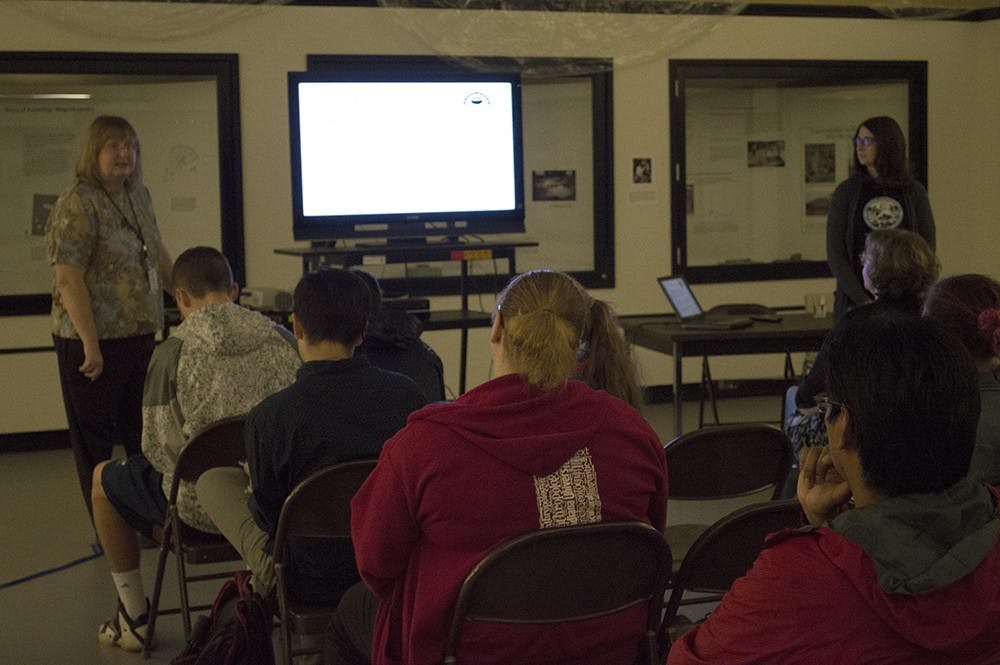Amy Johnson and Rachel Sharkey would like everyone to know they don’t go looking for dinosaur bones.
Johnson, Indiana state archaeologist, and Sharkey, archaeologist and records check coordinator, conducted a talk at IU’s Glenn A. Black Laboratory of Archaeology on Friday. The talk, titled “Public Service Work: Archaeology and the State of Indiana,” focused on what it means to be a state archaeologist.
“I don’t know how many times we get asked when we’re going to dig up more dinosaurs,” Johnson said.
But that is not what they do. Both women work for the Division of Historic Preservation and Archaeology within the Indiana Department of Natural Resources, whose mission is to promote conservation of Indiana cultural and natural resources.
This means that one of their main roles within the division is to review proposed state or federal funding projects, such as highway expansions or the construction of new cell phone towers. Sharkey estimated that the division reviews more than 3,000 of these proposals every year.
“Now every time I drive, all I see are cell towers everywhere,” Sharkey said.
Other initiatives led by the division include the Indiana Inventory of Historic Sites and Structures, a cemetery registry, a historic theater registry and a historic bridge registry.
They are also working on compiling the State Historic Architectural and Archaeological Research Database, to catalogue all information gathered by the registry initiatives as well as any archaeological sites and reports.
“But one of our favorite parts of this job is when we get the chance to do research and fieldwork,” Johnson said. “It’s something that gets us out of review mode with all these cell towers.”
Much of this fieldwork comes in the way of what Johnson and Sharkey referred to as “accidental discoveries,” or occasions when an individual or organization find an artifact, burial site or other such item of archaeological interest.
But a challenge of the job, Johnson said, is that they don’t get to go into the field as often as they would like.
This is partially due to the fact that the DHPA is an office of only four people with a large volume of work to complete. Beyond their survey and field work, they offer assistance to individuals restoring historic homes, coordinate outreach and public education programs and release regular publications and newsletters.
But there are a lot of positives to their jobs, both Johnson and Sharkey said.
“As an archaeologist, I love knowing that I’m helping people understand our shared past,” Johnson said. “I think that’s a really valuable thing to bring to your career.”
They also both love the outreach aspects of their jobs, Johnson said. Much of their work involves educational presentations similar to Friday’s talk. These presentations are designed to correct public misconceptions of what the DHPA does, which is one of their biggest challenges, Johnson said.
“You know, at first I wanted to do paleontology, which is the dinosaur thing,” Sharkey said. “But you can do archaeology in Indiana. You don’t have to go anywhere else to tell the story of the past.”






